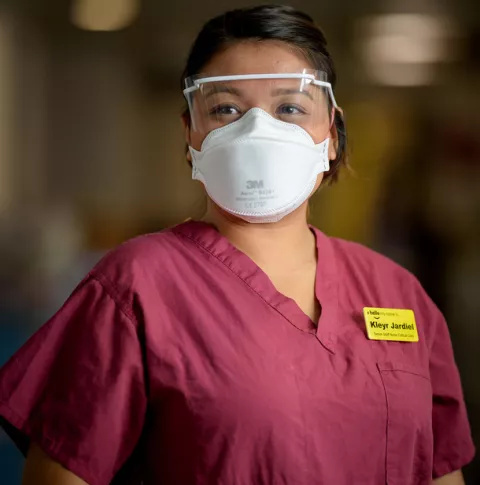Annual report summary 2020/21
Reporting back
This page provides a summary of key headlines from our Annual Report 2020/21.
This has been a year like no other for us all. The coronavirus (COVID-19) pandemic has presented unimaginable challenges and our heartfelt condolences go out to those who have lost family, friends and colleagues.
As an organisation we responded rapidly to the complex demands of the first wave. We worked creatively and at significant pace to transform the way we delivered services in our hospitals and in the community.
Team effort
Our estate was transformed to create extra critical care facilities and many of our staff were redeployed into areas where patients needed them most. Where it was safe to do so, telephone appointments and video consultation services replaced face-to-face appointments, and we all learned to social distance.
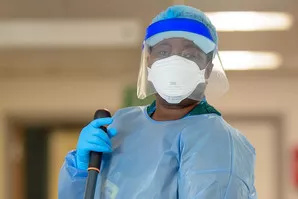
Colleagues in the community played a critical part in our response, preventing hospital admissions, caring for patients in their own homes and ensuring prompt discharge from our hospitals when appropriate. Our health inclusion team provided essential health checks and support to hundreds of street homeless people living temporarily in the capital's hotels.
Importantly, we worked collaboratively across south east London and with the independent sector to ensure we could create essential capacity and provide mutual aid so that patients always received the best possible care.
Data from the first wave of the pandemic confirmed that clinical outcomes at Guy's and St Thomas' – including at our new partners at Royal Brompton and Harefield – were extremely good. Many patients recovered and were able to return home thanks to the fantastic care provided by our staff.
Second wave
Over the summer and early autumn, as levels of infection in the community dropped, we were able to increase diagnostic, outpatient and planned inpatient services. Overall activity at this time reached 80% of the levels achieved at the same time in 2019/20. But this period of optimism and respite was short lived.
As the second wave of the pandemic hit in late December, we saw the number of COVID-19 patients admitted to critical care and across our general and acute wards increase significantly, over and above the numbers admitted during the first wave. This led to a reduction in planned care for non-COVID patients, though significantly less so than in the spring.
Our critical care capacity reached over 200 occupied beds, three times our usual capacity and a third more than March and April. Similar increases were also seen at Royal Brompton and Harefield hospitals, and collectively our hospitals were the largest provider of extracorporeal membrane oxygenation (ECMO) treatment to the very sickest patients.
Infection control has been an absolute priority throughout the pandemic. To ensure the safety of our patients and our staff, we implemented an asymptomatic staff testing programme, and continue to require all staff and patients to comply with social distancing rules, where possible, and to wear personal protective equipment (PPE), in accordance with national guidance at all times.
Vaccination
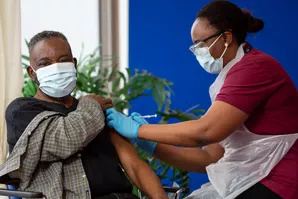
The Trust was designated the 'lead provider' for the national vaccination programme in south east London, and in December we began to vaccinate patients against COVID-19 as part of the biggest immunisation programme in the history of the NHS.
We established a number of vaccination pods across our hospital sites, redeploying staff, employing and training additional staff and redirecting resources as needed. By March 2021, we had delivered over 100,000 vaccines to staff and patients across south east London, in accordance with priority categories set out by the Joint Committee on Vaccination and Immunisation.
Support for staff
Our people are our most important asset and throughout the pandemic, the safety and health and wellbeing of our staff have been foremost in our thinking.
With generous backing from Guy's and St Thomas' Charity we have delivered an enhanced programme of wellbeing support through our 'Showing we care about you' programme. This has focused on providing practical help from pop-up shops providing free emergency essentials, to rest and recharge zones, as well as access to counselling and psychological support services. We also received generous donations from local people and businesses.
Although the number of COVID-19 patients we are treating in our hospitals and in the community has fallen dramatically in recent months, we continue to feel the impact. Our staff have made many sacrifices and we are determined that they have the opportunity and the support to help them rest and recuperate, recognising that this process will be different for each individual.
The impact of the COVID-19 pandemic on normal operational performance has been both significant and variable throughout the year.
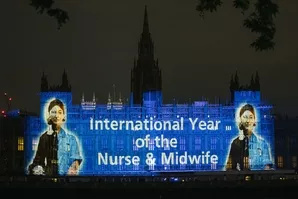
Across the NHS a great deal of diagnostic activity and treatment for non-COVID patients was suspended during the first wave of the pandemic in March and April, followed by a period during the summer and early autumn where the focus was very much on returning to pre-COVID activity levels.
By October we had reached 95% of pre-pandemic diagnostic activity, and levels of outpatient consultations and planned inpatient and day case treatment were at over 80% of pre-pandemic levels.
During the second wave, the explicit aim was to continue with a greater volume of non-COVID work and we sought to maintain this dual focus despite the huge pressure that many services were under, particularly our expanded critical care services. At the peak we had over 400 patients with COVID-19 being treated in Guy's and St Thomas', with many more being cared for in the community.
Despite this, most urgent cancer treatment continued, including surgery and most radiotherapy and chemotherapy, along with life-saving treatment for patients with cardiovascular and other extremely clinically urgent conditions.
This was achieved by working with partner hospitals in the independent sector and also segregating our own capacity so that patients were treated on separate COVID-19 (red and amber) and non-COVID (green) pathways, using regular testing as well as rigorous infection prevention and control measures to keep patients and staff safe.
New approaches
Through the hard work of our staff, much of our non-COVID outpatient activity was maintained from late spring onwards. We saw a significant shift to virtual appointments wherever possible, as well as other innovative approaches that allowed some of our most vulnerable patients to receive their consultations and carry out tests and minor procedures at home, without the need to travel to our hospital sites.
Many patients were also supported by our community services in their own home or other community settings, allowing them to avoid hospital admission or leave hospital more quickly. Clinics to follow up and support those suffering from 'long COVID' were also established. Diagnostic tests were maintained, although the impact of COVID-19 was felt in terms of the volume of patients that could be seen, particularly in areas such as endoscopy.
The number of patients attending our emergency department at St Thomas' Hospital also reduced, particularly during the first wave, and we worked hard to ensure patients felt confident to attend when needed. The number of patients attending, particularly with the most serious conditions, has now returned to pre-pandemic levels and our performance against the 4-hour target to see, treat, discharge or admit patients has remained above 90% for most months since the start of the pandemic.
In common with services around the country, referrals for cancer diagnosis and treatment reduced significantly in the early part of the pandemic, although we are now seeing these increase and we are working hard, with our partners across south east London, to ensure patients receive their diagnosis and treatment as quickly as possible. For example, we are trialling innovative initiatives to increase throughput in existing operating theatres, while also investing in additional capacity, including new theatres and extra surgical robots.
We are very conscious that the pandemic has exacerbated existing inequalities in terms of access to healthcare, as well as clinical outcomes, and we are closely monitoring and seeking to mitigate this impact going forward.
We have also seen overall waiting lists grow considerably in the past year, and we are working collaboratively across south east London and beyond to ensure all patients are seen as quickly as possible and according to clinical need. Where patients face longer waits, we are keeping them informed and working hard to ensure any change in clinical priority is reflected in the order in which patients are seen.
Despite the very significant adverse effect of the second wave on operational capacity, particularly in January and February, by April we had returned to 93% of diagnostic activity, 85% of outpatient activity and 71% of planned inpatient and day care treatment. Waiting times were also beginning to reduce, including for those patients waiting the longest.
Our financial position remained stable largely due to the revised national financial framework that was put in place to manage the pandemic.
This gave us a degree of protection from the loss of income associated with a reduction in elective and emergency care, as well as loss of income from commercial activities, while the focus was on responding to the pandemic. The financial framework also enabled us to claim back the cost of additional expenditure incurred as a result of responding to the pandemic.
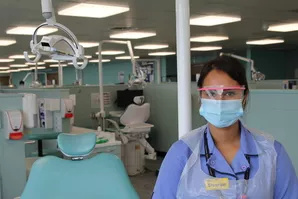
Contracts with NHS England and clinical commissioning groups for the delivery of clinical services were largely funded via block contract arrangements for the whole of 2020/21, thereby securing income levels. In this context, we have continued to challenge the baseline income on which our block contract allocation was calculated as we do not believe this adequately reflects our operational costs.
For the first 6 months of the financial year a retrospective top-up regime was in place, where we were able to claim additional income over and above its baseline allocation to enable it to report a break-even position. From October 2020, a revised arrangement has been in place where a mainly fixed top-up allocation was distributed to local integrated care sectors (ICS), ours being south east London ICS and distributions were agreed among the partner organisations.
After taking into account the additional costs incurred in responding to the COVID-19 pandemic, including rolling out the vaccination programme for south east London and providing support to partner organisations, we incurred a deficit of £235.7 million against which it was able to claim top-up funding. As a result, we were able to report a small surplus of £227,000 at the end of the financial year.
Our merger by acquisition with the Royal Brompton and Harefield NHS Foundation Trust took place at the start of February.
This was a historic moment for both organisations and a once in a generation opportunity to create a dynamic centre of national and international excellence devoted to the treatment of heart and lung disease.
We have worked together throughout the pandemic and enjoy common values, a shared appetite for innovation and a determination to deliver the best possible care for our patients.
As the merger happened during the second wave of the pandemic, we were unable to celebrate it as we might have hoped. However, in coming together as one organisation, we have now become one of the largest foundation trusts in the country with more than 22,700 staff and an anticipated annual income of over £2.4 billion.
As with any merger, work is only just beginning, and we are excited about the future opportunities this will provide to improve treatment and research for the benefit of our patients now and in the future.
Over the past 12 months the Trust has also continued to work hard to advance many of our major development programmes, all of which will be key to our longer-term recovery from the COVID-19 pandemic.
Construction began in August of a new state-of-the-art children's day surgery centre alongside the existing Evelina London Children's Hospital building. The new centre will provide more space for planned diagnostic and surgical procedures together with new operating theatres and specialist clinical facilities.
The new 5-storey building, which will open in 2022, is part of ambitious development plans for Evelina London to help meet the growing demand for our children's services.
A new £50 million imaging centre, with a range of state-of-the-art equipment, is also nearing completion at Royal Brompton Hospital and will open to patients in early 2022.
Pathology partnership

In October, with the support of Our Healthier South East London (our local integrated care system), we announced a new partnership with SYNLAB UK & Ireland to deliver pathology services across the region.
Under the new arrangements, SYNLAB will provide pathology services at Guy's and St Thomas', King's College Hospital, South London and Maudsley and Oxleas NHS Foundation Trusts, together with access for GP practices across south east London.
Our new partnership provides us with an exciting opportunity to make significant improvements to pathology services, including the introduction of digital pathology and investment in new laboratories and equipment. Urgent and routine test results will be delivered more quickly leading to improved patient care, and the service is expected to generate significant savings for the NHS, over 15 years.
To balance operational delivery alongside our ambitious strategic agenda, we have made changes to how we manage the Trust this year.
In January 2021 we completed the reorganisation of our clinical services into five clinical groups:
- Evelina London – Women's and Children's Healthcare
- Royal Brompton and Harefield
- Cardio-Respiratory and Critical Care
- Integrated and Specialist Medicine
- Cancer and Surgery
As we continue to grow in size and complexity, this new structure will allow us to adapt to ever-increasing demands while guaranteeing that strong clinical leadership remains at the heart of decision making at all levels.
In November, we selected Epic as the provider of our new electronic health record (EHR) system. We have called this our 'Apollo programme' to reflect the scale of our ambition and the wide-ranging nature of the implementation programme and clinical transformation that will be required ahead of it going live in April 2023.

Royal Brompton and Harefield hospitals will form part of this initial deployment and we are also working closely with our partners at King's College Hospital NHS Foundation Trust, as our aim is that this will become a single, integrated, digital solution across all our services.
The programme will transform the way that care is delivered and how our patients engage with us. Staff will be able to access the information they need more efficiently and patients will be empowered to become active partners in their own care, able to securely access their patient record from the comfort of their own home.
It will also bring unique opportunities for research from basic science, through better data capture, to patient-driven service improvements and greater efficiency.

Throughout the pandemic, we have been actively engaged in research into COVID-19 and made a significant contribution to the development of new diagnostic tests and treatments, and vaccines development.
Staff working across the research and development department, including the NIHR Biomedical Research Centre and the NIHR Clinical Research Facility, along with colleagues from King's College London and the South London Clinical Research Network have all contributed and have recruited thousands of participants to national and local studies.
We took part in the Oxford vaccine, Novavax and Janssen trials. And research using the innovative Zoe app identified loss of sense of smell and taste as a key symptom of COVID-19 which went on to be recognised in the World Health Organisation list of key symptoms of the disease.
The disproportionate impact of the COVID-19 pandemic on black, Asian and minority ethnic communities and the 'Black Lives Matter' movement have prompted considerable discussion and debate on issues of equality, diversity and inclusion across our organisation.
We are committed to ensuring everyone feels included, valued and respected.
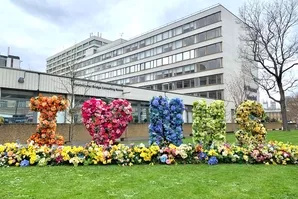
Over the summer, we held a number of 'Black Lives Matter' virtual discussion events with hundreds of staff sharing their stories and experiences with senior colleagues.
The need to do more to improve opportunities for career progression, remove discrimination and to build cultural capability and confidence across all levels of management were strong messages back from our staff and we are taking action to address these vital issues.
In Lambeth and Southwark, we serve two of the most diverse boroughs in England and have staff representing 116 different nationalities. We are incredibly proud of this diversity, and our strength lies in our ability to bring our different perspectives and experiences together for the benefit of all of our patients.
Facts and figures
- 22,700 staff, making us one of the largest local employers
- 116 different nationalities among our staff
- £2.4 billion annual turnover
- 37,000 Foundation Trust members
- 1,600 patients with COVID-19 treated during first wave of pandemic
- More than 200 critical care beds occupied during second wave of COVID-19 pandemic, three times normal capacity
- 100,000 COVID-19 vaccines delivered by March 2021
Full annual report 2020/21
Annual report outlining the Trust's financial and operational performance 2020/21.
This year's quality report has been produced as a stand-alone document due to the impact of the coronavirus (COVID-19) pandemic on the NHS.
Last updated: July 2022
